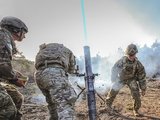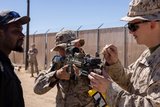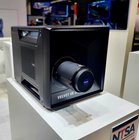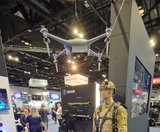Korean air force starts domestic training
The South Korean air force has set up its flight training system with domestic aircraft to train its pilots, it announced on 17 May.
The pilot training courses have three levels: introductory, basic, and advanced. The air force is using the KAI KT-100 four-seat, low-wing, single-engine light aircraft for the introductory flight course, replacing the Russian T-103 single-engine, low-winged training aircraft.
The basic and advanced courses will use the KAI KT-1 Woongbi turboprop aircraft and the KAI T-50 Golden Eagle supersonic advanced trainer aircraft. Pilots who successfully complete the Combat Readiness Training (CRT) or Lead-In Fighter Training (LIFT) can operate on the front line.
The KT-100 is an improved KC-100 Naraon aircraft. The air force is set to introduce 20 KT-100s in stages by December 2016.
The aircraft will be fully operational in the introductory flight course in 2017. The air force also plans to integrate the KT-100 into the force through civil-government-military cooperation involving KAI and the ministries of defence and land, infrastructure and transport.
Meanwhile, the air force will also integrate two FA-50 fighter squadrons into force in the first half and second half of 2016. This comes after the first FA-50 was integrated into the force.
General Jung Kyung-doo, Chief of Staff, Republic of Korea Air Force, said: 'We can cultivate elite warriors by training pilots - our main military strength in maintaining national security - with our own aircraft through the force integration of KT-100, an introductory trainer. It is also meaningful to Korea as we are able to showcase our aircraft development technology to the world, while promoting national interests as well.'
More from Training
-
![Cubic tailors mortar simulator for the US Army]()
Cubic tailors mortar simulator for the US Army
The company’s mortar trainer received improvements based on soldier’s feedback.
-
![Saab expands footprint in the US]()
Saab expands footprint in the US
The company will operate in two new locations in the coming years to better support US services.
-
![How terrain management capabilities can improve military training]()
How terrain management capabilities can improve military training
This type of tool provides more realistic training easing the incorporation of new scenarios that accurately represent the threats of the battlefield.
-
![I/ITSEC 2024: Australian Army approaches second phase of countermining training]()
I/ITSEC 2024: Australian Army approaches second phase of countermining training
The Engineering Corps has been conducting individual instruction using FLAIM Systems’ Sweeper and should start collective deployments in 2025.
-
![I/ITSEC 2024: Zeiss introduces Velvet 4K SIM projector for night flight simulation]()
I/ITSEC 2024: Zeiss introduces Velvet 4K SIM projector for night flight simulation
The next-generation platform is motion-compatible and can be used in OTW and NVG applications.
-
![I/ITSEC 2024: Saab introduces UAV live training capability]()
I/ITSEC 2024: Saab introduces UAV live training capability
The system can be used to prepare soldiers for both drone offensive operations and CUAS missions.

























